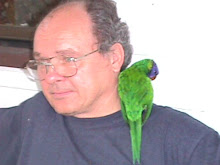 Again, preparing the notes for a
November report on Allen Road ran into the same brick wall as October had done
– school, tests, marking and the accursed report cards which nowadays follow a
set [long] format. It blighted any hope
of having the October or November reports out into the bloggersphere on
time. I had considered abandoning the
whole project until the end of December or even waiting until the beginning of
the new year, 2014. The urge to write,
to record and report overpowered any lingering hesitations.
Again, preparing the notes for a
November report on Allen Road ran into the same brick wall as October had done
– school, tests, marking and the accursed report cards which nowadays follow a
set [long] format. It blighted any hope
of having the October or November reports out into the bloggersphere on
time. I had considered abandoning the
whole project until the end of December or even waiting until the beginning of
the new year, 2014. The urge to write,
to record and report overpowered any lingering hesitations.
Overall, incorporating all our
birding for the month around Queensland [we didn’t venture Beyond the Pale],
November has turned up trumps; at 138 species it even topped the previous
overall 2013 high of 135 in October. In
broad terms, November was a good birding month.
However, this did not filter down
to Allen Road itself- no doubt at least partly because I spent much of my time
indoors, poring over the aforementioned school work. At 59 species, November 2013 fell well short
of the all-time Allen Road November monthly tally record of 72 species [set in
November 2006]. In terms of November
species tallies since the inception of Allen Road records [2001], November 3013
crawled into 6th overall place; neither the worst [45 in November
2004] nor even second worst [52 in November 2008 and 2012].
Not that the birds themselves let
us down. The regulars were always there:
Torresian Crow Corvus orru, Laughing
Kookaburra Dacelo novaguineae,
Australian Magpie Cracticus tibicen,
Grey Butcherbird Cracticus torquatus and
Pied Currawong Strepera graculina. Along with the smaller fry – Noisy Miner Manorina melancephala, Apostlebird Struthidea cinerea, Galah Eolophus roseicapillus, Rainbow Lorikeet
Trichoglossus haematodus,
Bar-shouldered Dove Geopelia humeralis
and Crested Pigeon Ocyphaps lophotes
they formed the backbone of the Allen Road natural diurnal aviary.
Their nocturnal counterparts held
up their end of the avian spectrum although the Australian Owlet-nightjar Aegotheles cristatus disappeared
altogether during November [last reported on 25 September this year]. On the other hand, both the White-throated
Nightjar Eurostopodus mystacalis [5
appearances] and Southern Boobook Ninox
novaeseelandiae [7 appearances] shone brightly on the tally list. The touch
of cream topping the avian cake came in the form of the Tawny Frogmouth Podargus strigoides which put in two
appearances during the month. The Bush
Stone-curlew Burhinus grallarius,
albeit considered more crepuscular than truly nocturnal by some observers,
managed to put in four appearances during the month.
Of particular note was the Grey
Shrike-thrush Colluricincla harmonica on
10th November, the first of six appearances during the month; it equalled the
six in December 2004. The history of the
species along Allen Road has a rather chequered history. There were no recorded observations during
2001 and only the single record in April 2002.
During 2003 two were noted, in July and September [the only time the
species has appeared in those particular months]. There was a relative population explosion in
2004 with one bird in February and March, three in June, one in November and a
previously unheralded six during December; a total of twelve [12] for the year.
The 2004 tally was halved the
following year, 2005, with only six Grey Shrike-thrushes putting in a show:
four in January and one each in February and April. There was a total drought in 2006 followed by
four appearances over the next two years [three during 2007 and only one in
2008] before 2009 and 2010 came in with zero scores. Matters improved with a
solitary observation in August 2011 and two shrike-thrushes noted in 2012.
As of at the end of November
2013, there had been observations in February [1], March [1], October [1] and
November [6].
To keep us on our toes, November
did provide a number of one-off sightings well worth the recording. The early part of the month was slow in
showing anything but the day-to-day regulars however on the 17th a
White-faced Heron Egretta picata flew
by overhead; it never returned. Two days
later a pair of Red-winged Parrots Aprosmictus
erythropterus flew across the property, travelling from west to east. On 23 November a Spiny-cheeked Honeyeater Acanthagenys rufogularis put in a brief
appearance while on the 25th a Yellow-tailed Black-Cockatoo Calyptorhynchus funereus called loudly
as it passed by. Finally, on 27th
November we tracked down and saw the raucous Brush Cuckoo Cacomantis variolosus; it was only the second observation since
February [one had called in October].
In many respects November could be seen as a
rather disappointing moth but given the constraints imposed upon both Fay [who
always poor-reads my work] and I it gave of its best. The silver lining along this particular black
cloud is that I effectively retired on 13 December which means no more testing,
marking or writing report cards; more birding and no doubt a glass or two of
addition red wine awaits- once I’ve started on that long list of chores around
the place that Fay has compiled for me!
To the Christian amongst you, a
very Merry Christmas.
To all the others, a Merry Winter
[northern hemisphere] or Summer [southern hemisphere] Solstice.


.jpg)






.jpg)

.jpg)



.jpg)
.jpg)
.jpg)







